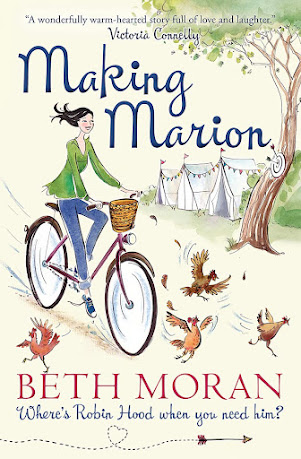“The Last of the Greenwood" by Sharon Whitby (1975)
There are countless Robin Hood novels out there, some of them better known than others and some that have gone completely under the radar. Recently, while browsing used books online, I came across one I had never heard of before — The Last of the Greenwood by Sharon Whitby.
As someone who expressly collects and reads Robin Hood
literature with a focus on Maid Marian and other women from the Robin Hood
tradition, I was immediately interested.
For starters, the painting on the cover is beautiful and prominently
features Marion (the preferred spelling for this story). If I've ever given in
to a cover buy, this would be it.
The subtitle on the cover reads, "A dazzling novel of
romance and adventure — the great love story of Robin Hood and Marion from the
legend that is the subject of a major motion picture." To be clear, this
book is not the basis for any film that I'm aware of. My guess is that it is
referencing Robin and Marian (1976) featuring Sean Connery and Audrey Hepburn,
which was released only one year after this was published in
1975. The two stories have virtually no similarities, except for one, which
I'll discuss later on.
Synopsis as it appears on the back cover: "Strapping young
Robin must choose between the captivating Maid Marion, a forest girl, and his beautiful
high-born cousin, Elizabeth. His fatal choice draws him into a whirlwind of
gallant schemes and deadly adventures. As he roams the kingdom in search of his
true love, the lady scorned sets out to wreak a dark, bloodlusting vengeance."
There have been other renditions of the Robin Hood legend which incorporated paganism into the story, most notably the TV series, Robin of Sherwood. Robin Hood has certainly been associated with Green Man mythology previously, both by contemporary academics, other fictional media, and dating far back into the origins of the story. Here I must fully admit to having not yet seen Robin of Sherwood, so I don't know how much it associates Robin with the Green Man. But, for me so far, The Last of the Greenwood is the first time I have seen a Robin Hood story so intrinsically linked with the Green Man and I really enjoyed it.
You can find a pretty good rundown of Robin Hood's pagan associations on this website by Hester NicEilidh. It articulates the details much better than I could, although it's a bit dated and there are probably additional resources and academic research available now.
The pacing of this book was quite quick, and for the size of the book, it covers an incredible span of time, beginning when Robin is an infant, until his death in middle age. It's a full account of the story from beginning to end, and although I know some people find it depressing to conclude a Robin Hood novel with his death, it is incredibly thematic in the case of The Last of the Greenwood, and one of the reasons that I found this particular retelling so compelling. Which brings me to what makes this 1975 novel similar to the 1976 film that is alluded to on the cover.
I've put a certain amount of consideration into the women often featured in Robin Hood lore, including the Prioress of Kirklees, responsible for the Robin Hood's death. Very little is known about the Prioress, and her character is not often explored with any kind of depth. Recently, I've considered how someone should give her a proper villain origin story, or some kind of background. As it turns out, Robin and Marian (1976) and Whitby's book both explore this very topic, and they're the only two pieces of Robin Hood media that I've encountered (so far) that do this.
Robin's cousin Elizabeth doesn't get much in way of character development, and as the synopsis literally states, she is a "woman scorned" and fulfills the trope as suggested. Throughout the novel, she haunts Robin's steps exacting revenge until she gets the ultimate chance and takes his life. While I wasn't particularly impressed with her character, I loved her inclusion in the story. (As a note, Elizabeth de Stayton is commonly the historical Prioress of Kirklees associated with Robin Hood, although her historical timeline doesn't match with the timeline of The Last of the Greenwood. It was still a fun reference to find!)
For all her revenge, Elizabeth is not to blame for all of the ills that plague Robin. This book was something of a page-turner for me because of how Robin continues to make mistake after mistake in an effort to escape fate or forge his own path, and only succeeds in creating destruction. He often breaks tradition within the Old Religion, ignoring the warnings of other members of the coven, and the consequences are always quick to catch up with him. There's a sense of dark foreboding throughout the whole story, each tragedy building upon the last. He makes a train-wreck of his own life and watching everything fall apart is riveting.
I consider this book to be a hidden gem of Robin Hood literature. It's not perfect, and the writing and characterization is occasionally a bit clunky, but The Last of the Greenwood is nonetheless unique and worthwhile. I loved reading this book, and I hope others are able to snag a copy for themselves to appreciate this marvelous pulp fiction Robin Hood book.




Comments
Post a Comment